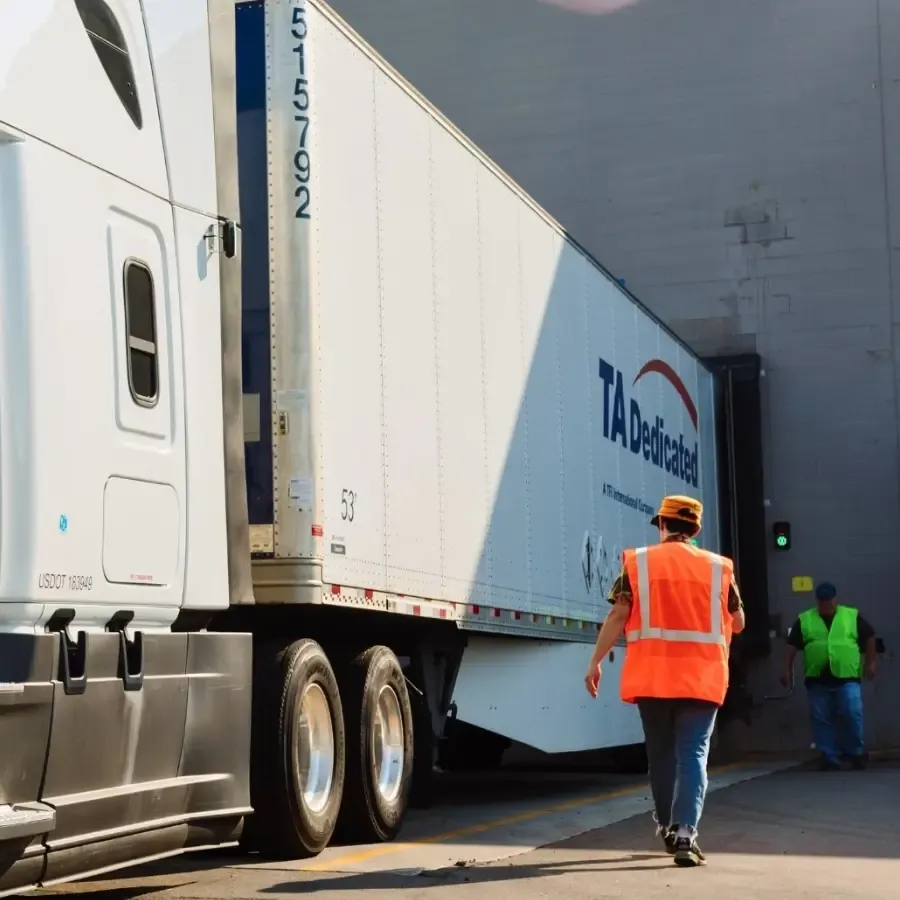Supply Chain Risk Management
Connect with TA Dedicated
Safety Programs Provide Better Outcomes
According to the Federal Motor Carrier Safety Administration (FMCSA), there were approximately 499,000 police-reported crashes of all severity types involving large trucks in 2019. The average cost of a semi-truck accident varies significantly depending on factors such as the severity of the accident, property damage, lost wages, medical expenses, legal fees, insurance costs, regulatory fines, and more.
The FMCSA breaks down the average truck accident cost:
- Health and property damage: $334,892
- A semi-truck pulling multiple trailers: $1.2M
- A semi-truck accident resulting in a fatality: $7.2M
Organizations that prioritize supply chain safety understand the positive impacts the right transportation model and mindset can have on revenue and people.

Benefits of a Supply Chain Risk Management

Preserve Brand Reputation
Make sure you’re using a carrier that has a high reputation of safety. Look for a provider who prioritizes these attributes:
- Ongoing driver and operations safety training
- Driver and operations regulatory compliance
- Worker safety and well-being
- Cargo and asset protection

Improve Risk Management
Supply chain risk management programs reduce costs beyond the value of the freight itself. Reduce your exposure from:
- Increased insurance premiums
- Dissatisfied clients and loss of future business
- Threat of legal action
- Lost time due to freight replacement/repair

Build a Safety Culture
Safety programs and safety-led cultures ensure shipper customers are:
- Receiving reliable service
- Lowering their risk profile
- Maintaining compliance
- Experiencing improved service levels
- Gaining peace of mind

Focus on Training
Real value comes from carriers who tailor driving training to the specific needs of the customer, including a focus on:
- Route familiarization
- Driver customer service training
- Technology and equipment training
- Specialized service training (e.g. load securement)
- Emergency response training
- Continuous education
- Driver wellness programming

Leverage Technology
Fleets of all sizes and expertise have become more efficient to shippers through their adaptation of technology and data-driven insights. Make sure you’re getting these benefits:
- Dash and forward-facing camera help protect drivers from blame
- AI application and machine learning providing safety recommendations
- Fleet maintenance and safety checks to minimize risk of accident

Supply Chain Safety Model
Fleets offering a comprehensive option that helps ensure safety in trucking operations can lead to:
- Lower costs
- Improved efficiencies
- Maximized ROI
Shippers who leverage safety-driven fleet models benefit from:
- Consistency in service
- Reliable performance
- Improved safety outcomes
- Lowered risk profile